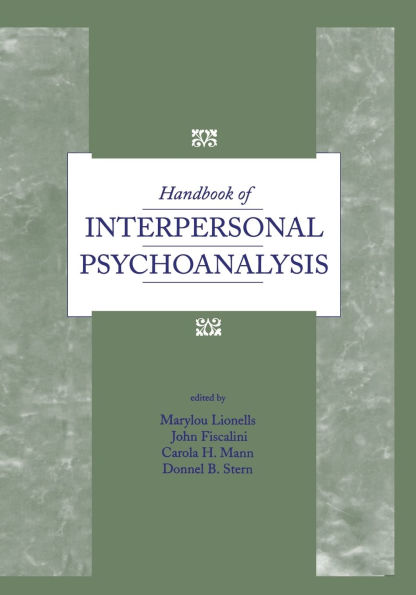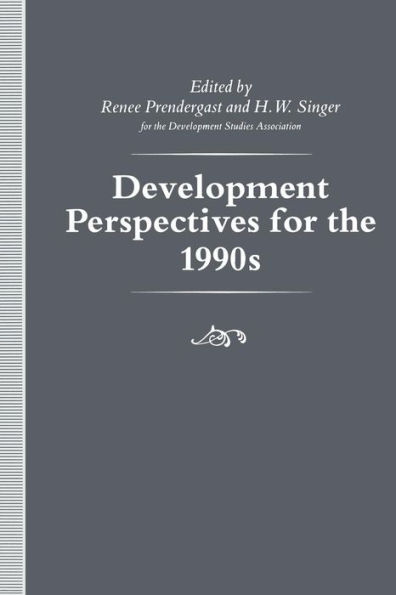Home
The Interpersonal Perspective in Psychoanalysis, 1960s-1990s: Rethinking transference and countertransference
Barnes and Noble
Loading Inventory...
The Interpersonal Perspective in Psychoanalysis, 1960s-1990s: Rethinking transference and countertransference in Franklin, TN
Current price: $62.99

Barnes and Noble
The Interpersonal Perspective in Psychoanalysis, 1960s-1990s: Rethinking transference and countertransference in Franklin, TN
Current price: $62.99
Loading Inventory...
Size: OS
North American psychoanalysis has long been deeply influenced and substantially changed by clinical and theoretical perspectives first introduced by interpersonal psychoanalysis. Yet even today, despite its origin in the 1930s, many otherwise well-read psychoanalysts and psychotherapists are not well informed about the field.
The Interpersonal Perspective in Psychoanalysis, 1960s–1990s
provides a superb starting point for those who are not as familiar with interpersonal psychoanalysis as they might be. For those who already know the literature, the book will be useful in placing a selection of classic interpersonal articles and their writers in key historical context.
During the time span covered in this book, interpersonal psychoanalysis was most concerned with revising the understanding of the analytic relationship—transference and countertransference-and how to work with it. Most of the works collected here center on this theme. The interpersonal perspective introduced the view that the analyst is always and unavoidably a particular, "real" person, and that transference and countertransference need to be reconceptualized to take the analyst’s individual humanity into account. The relationship needs to be grasped as one taking place between two very particular people. Many of the papers are by writers well known in the broader psychoanalytic world, such as Bromberg, Greenberg, Levenson, and Mitchell. But also included are those by writers who, while not as widely recognized beyond the interpersonal literature, have been highly influential among interpersonalists, including Barnett, Schecter, Singer, and Wolstein.
Donnel B. Stern and Irwin Hirsch, prominent interpersonalists themselves, present each piece with a prologue that contextualizes the author and their work in the interpersonal literature. An introductory essay also reviews the history of interpersonal psychoanalysis, explaining why interpersonal thinking remains a coherent clinical and theoretical perspective in contemporary psychoanalysis.
The Interpersonal Perspective in Psychoanalysis, 1960s
–
1990s
will appeal greatly to psychoanalysts and psychoanalytic psychotherapists wanting to know more about interpersonal theory and practice than can be learned from current sources.
The Interpersonal Perspective in Psychoanalysis, 1960s–1990s
provides a superb starting point for those who are not as familiar with interpersonal psychoanalysis as they might be. For those who already know the literature, the book will be useful in placing a selection of classic interpersonal articles and their writers in key historical context.
During the time span covered in this book, interpersonal psychoanalysis was most concerned with revising the understanding of the analytic relationship—transference and countertransference-and how to work with it. Most of the works collected here center on this theme. The interpersonal perspective introduced the view that the analyst is always and unavoidably a particular, "real" person, and that transference and countertransference need to be reconceptualized to take the analyst’s individual humanity into account. The relationship needs to be grasped as one taking place between two very particular people. Many of the papers are by writers well known in the broader psychoanalytic world, such as Bromberg, Greenberg, Levenson, and Mitchell. But also included are those by writers who, while not as widely recognized beyond the interpersonal literature, have been highly influential among interpersonalists, including Barnett, Schecter, Singer, and Wolstein.
Donnel B. Stern and Irwin Hirsch, prominent interpersonalists themselves, present each piece with a prologue that contextualizes the author and their work in the interpersonal literature. An introductory essay also reviews the history of interpersonal psychoanalysis, explaining why interpersonal thinking remains a coherent clinical and theoretical perspective in contemporary psychoanalysis.
The Interpersonal Perspective in Psychoanalysis, 1960s
–
1990s
will appeal greatly to psychoanalysts and psychoanalytic psychotherapists wanting to know more about interpersonal theory and practice than can be learned from current sources.
North American psychoanalysis has long been deeply influenced and substantially changed by clinical and theoretical perspectives first introduced by interpersonal psychoanalysis. Yet even today, despite its origin in the 1930s, many otherwise well-read psychoanalysts and psychotherapists are not well informed about the field.
The Interpersonal Perspective in Psychoanalysis, 1960s–1990s
provides a superb starting point for those who are not as familiar with interpersonal psychoanalysis as they might be. For those who already know the literature, the book will be useful in placing a selection of classic interpersonal articles and their writers in key historical context.
During the time span covered in this book, interpersonal psychoanalysis was most concerned with revising the understanding of the analytic relationship—transference and countertransference-and how to work with it. Most of the works collected here center on this theme. The interpersonal perspective introduced the view that the analyst is always and unavoidably a particular, "real" person, and that transference and countertransference need to be reconceptualized to take the analyst’s individual humanity into account. The relationship needs to be grasped as one taking place between two very particular people. Many of the papers are by writers well known in the broader psychoanalytic world, such as Bromberg, Greenberg, Levenson, and Mitchell. But also included are those by writers who, while not as widely recognized beyond the interpersonal literature, have been highly influential among interpersonalists, including Barnett, Schecter, Singer, and Wolstein.
Donnel B. Stern and Irwin Hirsch, prominent interpersonalists themselves, present each piece with a prologue that contextualizes the author and their work in the interpersonal literature. An introductory essay also reviews the history of interpersonal psychoanalysis, explaining why interpersonal thinking remains a coherent clinical and theoretical perspective in contemporary psychoanalysis.
The Interpersonal Perspective in Psychoanalysis, 1960s
–
1990s
will appeal greatly to psychoanalysts and psychoanalytic psychotherapists wanting to know more about interpersonal theory and practice than can be learned from current sources.
The Interpersonal Perspective in Psychoanalysis, 1960s–1990s
provides a superb starting point for those who are not as familiar with interpersonal psychoanalysis as they might be. For those who already know the literature, the book will be useful in placing a selection of classic interpersonal articles and their writers in key historical context.
During the time span covered in this book, interpersonal psychoanalysis was most concerned with revising the understanding of the analytic relationship—transference and countertransference-and how to work with it. Most of the works collected here center on this theme. The interpersonal perspective introduced the view that the analyst is always and unavoidably a particular, "real" person, and that transference and countertransference need to be reconceptualized to take the analyst’s individual humanity into account. The relationship needs to be grasped as one taking place between two very particular people. Many of the papers are by writers well known in the broader psychoanalytic world, such as Bromberg, Greenberg, Levenson, and Mitchell. But also included are those by writers who, while not as widely recognized beyond the interpersonal literature, have been highly influential among interpersonalists, including Barnett, Schecter, Singer, and Wolstein.
Donnel B. Stern and Irwin Hirsch, prominent interpersonalists themselves, present each piece with a prologue that contextualizes the author and their work in the interpersonal literature. An introductory essay also reviews the history of interpersonal psychoanalysis, explaining why interpersonal thinking remains a coherent clinical and theoretical perspective in contemporary psychoanalysis.
The Interpersonal Perspective in Psychoanalysis, 1960s
–
1990s
will appeal greatly to psychoanalysts and psychoanalytic psychotherapists wanting to know more about interpersonal theory and practice than can be learned from current sources.

















